Engines are large, bulky, and heavy, so when you have one you need to move, it can seem like a fairly intimidating endeavor. The fact is, shipping engines can be tough, especially if you don’t have much experience with shipping and dealing with freight. However, whether you’re a hobbyist, a mechanic, or a large-scale manufacturer, sooner or later you’re going to need to know how to ship an engine.
To ship an engine, you need to pick a shipping method, pack your engine properly, and get a carrier who will move your freight safely for a reasonable price. And, on top of that, engines are classified as Dangerous Goods, so you will need to comply with HazMat regulations too.
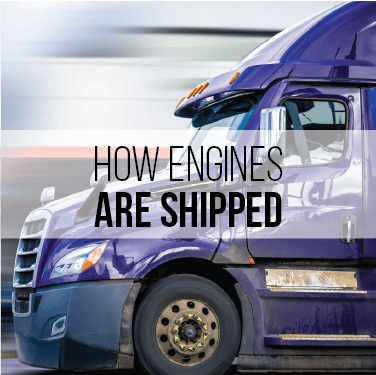
Engines are typically shipped as LTL Freight. That means “Less-Than-Truckload,” so the engine would be sharing a truck with several other different shipments. Many shippers hail this as the only good option for shipping an engine, but it’s not.
FTL, or “Full-Truckload Shipping,” is often characterized by large semis filled with one shipper’s freight, moving directly from the point of origin to the point of delivery. With that in mind, you might not even consider it as an option for shipping a single engine, which wouldn’t take up more space than a single pallet. However, FTL shipping isn’t quite so straightforward, and it could end up being a better option for you.
The thing is, you don’t have to use a full-size trailer for FTL shipping. You can use whatever size truck you want, with whatever size trailer would accommodate what you have to ship. You could end up having your engine loaded up into a dedicated box-truck or cargo van instead. As you might have guessed, there are lots of benefits to shipping your engine on a dedicated truck instead of going with LTL, such as:
Needless to say, if your engine is particularly pricy, it would be well worth the extra costs to ship it FTL to ensure it gets to its destination quickly and safely.
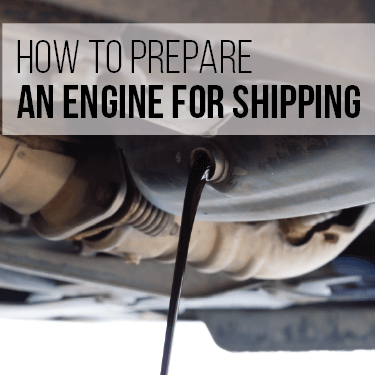
Regardless of whether you choose FTL or LTL shipping, you will still need to prepare the engine prior to it getting picked up by the carrier. If you don’t, they reserve the right to refuse your engine, and you will not be refunded for any deposits or time lost. In fact, you may even be charged an extra fee to make up for the lost time and gas the carrier lost driving out to you.
So, how do you prepare an engine for shipping?
The very first thing you will need to do to get an engine ready for shipping is to drain the fluids. Not only does this reduce the risk of your shipment making a mess, but it also makes the engine lighter and easier to handle.
Once you have drained the fluids, wipe everything down with dry towels to mop up any liquid. Ideally, your engine should not be greasy, oily, or wet, otherwise the carrier may reject it. The engine doesn’t have to be spotless, but you should do your best to get it as clean as possible. And yes, the carrier will inspect your engine before loading it onto the truck.
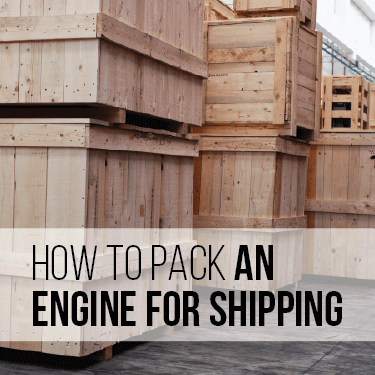
There are two ways to pack an engine for shipping: in a crate or on a pallet. Most shippers chose to pack engines in crates instead of pallets because they offer superior protection. In fact, some carriers will refuse to pick up an engine that hasn’t been crated out of liability concerns. However, if you have discussed this with a specific carrier and you know they would still accept a palletized engine, then you can use either option.
Regardless of which option you choose, you need to make sure the fluid intakes are easily accessible because the carrier will want to check the dipsticks to verify that you have actually drained all the fluids out of the engine.
Crates are the best option for packing an engine since they offer superior protection compared to the alternative. Being boxed in on all sides means that the engine can’t be bumped or knocked into, and it would stay safe and secure for the whole trip. However, crating an engine isn’t as simple as just throwing it in a box and calling it a day.
The best option for crating an engine is to use an engine storage stand with no wheels, bolted to the bottom of a large crate. That way, the engine can sit inside the crate without moving around, and it will be positioned in a way that causes no damage to any of its components. As an added layer of protection, you can position foam around the edges of the engine to cushion it and help hold it in place.
Make sure your crate is assembled with nuts and bolts so it can be easily opened up again. Remember, the carrier will want to check that you’ve emptied the fluids, and they can’t do that if the crate doesn’t open easily.
Packing an engine on a pallet is not recommended, but it can be done if the appropriate precautions are taken into consideration.
The first step of palletizing an engine is to get a pallet that is large enough. You’ll want to make sure that the engine will have 4 inches of space around it when sitting in the center of the pallet. Then, you can either place the engine directly on the pallet or screw 2x4s to the edges of the pallet to elevate the engine so it isn’t sitting directly on the oil pan. Then, you’ll need to take durable straps to secure it to the pallet. You can use nylon straps, ratchet straps, or even chains.
Once the engine is secured to the pallet, you’ll want to protect it. Cover the engine with a moving blanket or cardboard, then shrink-wrap the entire thing. Once again, you need to make sure that the fluid intakes are accessible, or have the carrier verify the liquids have been drained before you shrink wrap the engine.
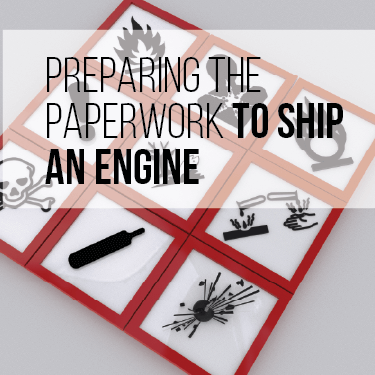
Engines are considered “dangerous goods” or “hazardous materials” when they are being transported by road, due to their combustion chambers and flammable components. No matter how well you wipe down your engine, there’s a good chance that some fuel residue will still be hiding in the nooks and crannies, and that can make them particularly hazardous to ship.
Thankfully, dealing with the paperwork for shipping hazardous materials isn’t as hard as you would imagine.
The first thing you’ll need to do is draft up a dangerous goods declaration form, which should include info such as:
In addition to that, you will need to provide a safety data sheet, which outlines how the shipment is dangerous and how it should be handled. It should also include instructions on how to deal with the shipment if it ignites. Although it might seem obvious how a burning engine should be handled, you still need to provide the instructions to comply with the law.
Finally, you will need to make sure your engine is properly labeled with the appropriate hazard communication labels. The truck that will be moving your shipment should also be outfitted with large placards that clearly identify the risk the shipment poses.
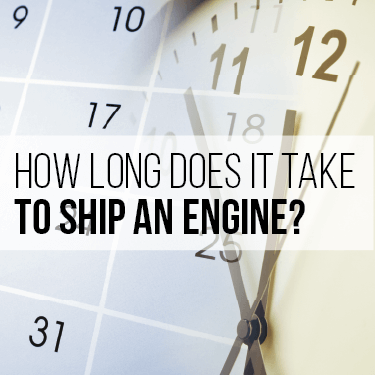
Shipping an engine on a freight truck does not take long. Depending on how far the engine has to travel, and what the terrain and weather look like, you could expect the truck to make the trip in just a few days. However, if you need the truck to move through mountainous terrain, or if the weather turns bad, then you can expect to wait a little longer for your engine.
However, it’s important to keep in mind that distance and environmental factors aren’t the only factors at play here. Theoretically, you can cover a distance of 1500 miles in under 24 hours, however, there are laws in place that prevent a driver from being on the road for that amount of time.
Remember that trucks don’t drive themselves, and a real person has to make the drive from one point to another. Truck drivers can only drive a maximum of 11 hours in one day, so that 24-hour trip would actually take them 3 days to complete. Driver teams, however, can double their time on the road and get a shipment delivered in half the time. It is important to remember that driving teams are only available in full-size freight trucks, so that wouldn’t be available to you if you go with a smaller truck.
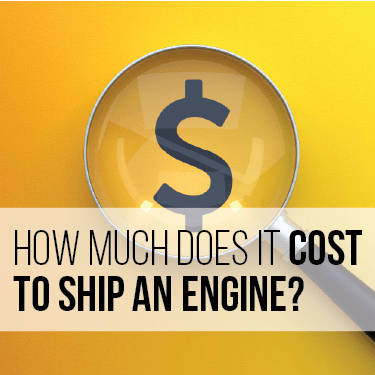
Because of the flexible nature of the shipping industry, it would be impossible to get an estimate that’s even close to accurate without giving details of your shipment. There are far too many factors that could influence the price, such as:
Even if you get a quote for your shipment at one point, you aren’t likely to pay the same rate some time down the road, even if all the other factors are the same. Likewise, a truck that has to travel through snow is going to charge more than one that has to travel the same distance in fair weather.
The most accurate way of finding out how much it would cost to ship an engine is to reach out to a shipping company for a freight quote. Getting a quote is free, so there’s no need to try to estimate the cost yourself. This is the only way to ensure you will be getting an accurate estimate.
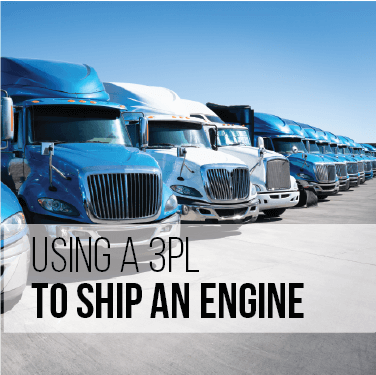
One of the best options for hassle-free shipping is definitely with the help of a Third-Party Logistics Company (3PL). 3PLs operate like a middle man between shippers and carriers, and they can help you find the best carrier for the lowest price. Getting you a good deal without compromising quality is the primary goal of a 3PL.
Although you might not see the point of working with a 3PL to ship one engine, there are a few situations in which it would be worth it.
If you sell engines, either newly manufactured or refurbished, then you may find that you have to ship them fairly frequently. In that case, a long-term partnership with a reliable 3PL could save you time, money, and stress in the long run. Not only that, but you will be able to work with a dedicated representative who would be familiar with your particular shipping needs, so there’s no need to explain everything from the beginning with each new carrier you try to work with. Your representative would know who you are, what you ship, and what your expectations are based on previous shipments.
Likewise, if you are particularly busy, you could rely on a 3PL to do all the hard work of finding a good carrier and communicating with them on your behalf. Finding a truck driver who is reliable, affordable, properly licensed, and capable of handling your specific shipment can take up a lot of your time. Searching for the right carrier can even end up delaying your shipment.
If you aren’t as familiar with the process of shipping goods across the country, then you could end up making costly mistakes. If you don’t know what you’re doing, you could end up working with shady partners who could lose or damage your shipment. By working with a 3PL, you would know that you are getting the best service the industry has to offer. 3PLs only work with their own network of carrier partners, all of whom are carefully vetted and selected as the best-of-the-best.
No matter who is moving your shipment, however, there is always a chance that something could go wrong. If a driver makes a mistake or your shipment is damaged in some way, having a 3PL on your side can make the claims process much simpler. Not only that, but many 3PLs offer additional insurance policies to make sure that your shipment is covered no matter what.
If you need a ship an engine—or anything else—then R+L Global Logistics has your back! R+L Global Logistics is a world-class global logistics company with a massive network of carriers. We only work with the most reliable carriers in the nation, and because of our huge network, we can offer a variety of options and value-added services to meet any customer’s needs. No matter how you need your shipment customized, we can accommodate you.
In addition to high-quality service and speedy delivery, we also offer:
Our 99.5% on-time delivery record speaks for itself. If you’re ready to ship an engine with R+L Global Logistics, you can request a freight quote immediately and get an answer back within a few hours to a few days. We can guarantee that we will give you an accurate, fair quote with no strings attached and no hidden fees. If you still have questions, we would be happy to talk more about our services with you! Give us a call at (866) 353-7178 to start a conversation.
We look forward to working with you and bringing you the best service the logistics industry has to offer.
R+L Global Logistics
315 NE 14th St., Ocala, FL 34470